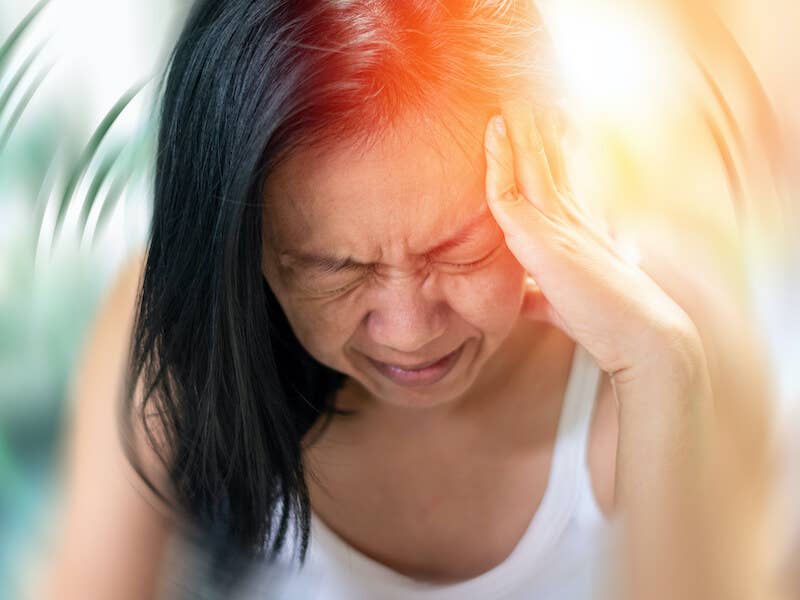New science on how migraines affect the sleep cycle
Study finds differences between perceived and actual sleep quality in people with migraines.

[Sept 27, 2021: American Academy of Neurology]
Adults and children with migraines may get less quality, REM sleep time than people who don’t have migraines. That’s according to a meta-analysis published in the September 22, 2021, online issue of Neurology®, the medical journal of the American Academy of Neurology. Children with migraines were also found to get less total sleep time than their healthy peers but took less time to fall asleep.
Rapid Eye Movement (REM) sleep is the stage of sleep that involves the most brain activity and vivid dreams. It is important for learning and memory function.
“Do migraines cause poor sleep quality or does poor sleep quality cause migraines?” said meta-analysis author Jan Hoffmann, MD, PhD, of King’s College London in the United Kingdom and a member of the American Academy of Neurology. “We wanted to analyze recent research to get a clearer picture of how migraines affect people’s sleep patterns and the severity of their headaches. That way, clinicians can better support people with migraines and deliver more effective sleep treatments.”
For the meta-analysis, researchers included 32 studies, involving 10,243 people. Participants completed a questionnaire to rate their own sleep quality. It asked about sleep habits, including how long it takes to fall asleep, total sleep time and the use of sleep aids. Higher scores indicate worse sleep quality.
For many of the studies, people took part in an overnight sleep lab used to diagnose sleep disorders. This sleep study records brain waves, the oxygen level in the blood, heart rate and eye movement.
Researchers found that adults with migraines overall had higher average scores on the questionnaire than people without migraines, with a moderate amount of the difference due to the migraines. The difference was even greater in people with chronic migraines.
When researchers looked at sleep studies, they found adults and children with migraines had less REM sleep as a percentage of their total sleep time than their healthy counterparts.
When looking at children with migraines, researchers found they had less total sleep time, more wake time, and shorter time for sleep onset than children without migraines. Hoffmann said it’s possible children with migraines may fall asleep more quickly than their peers because they may be sleep deprived.
“Our analysis provides a clearer understanding of migraines and how they affect sleep patterns and illustrates the impact these patterns might have on a person’s ability to get a good night’s sleep,” Hoffmann said.
The meta-analysis does not prove a causal relationship between sleep and migraines.
A limitation of the meta-analysis is that medications that affect sleep cycles were not taken into account.
The meta-analysis was supported by the Medical Research Council and the Migraine Trust in the U.K.
For more science stories check out our New Discoveries section at The Brighter Side of News.
Like these kind of feel good stories? Get the Brighter Side of News' newsletter.
Tags: #New_Discoveries, #Sleep, #Migraines, #Headaches, #Science, #Medical_News, #Research, #The_Brighter_Side_of_News



